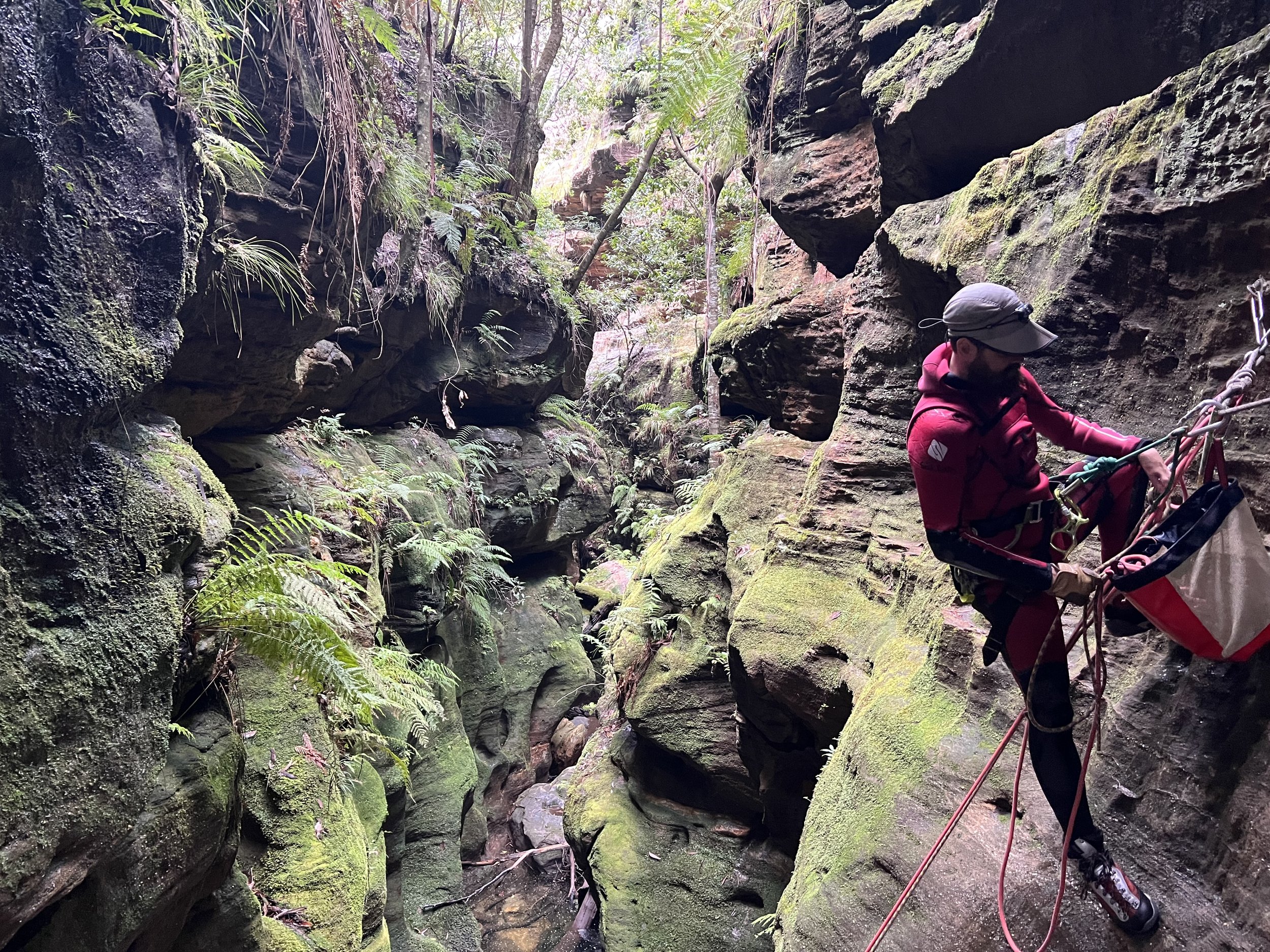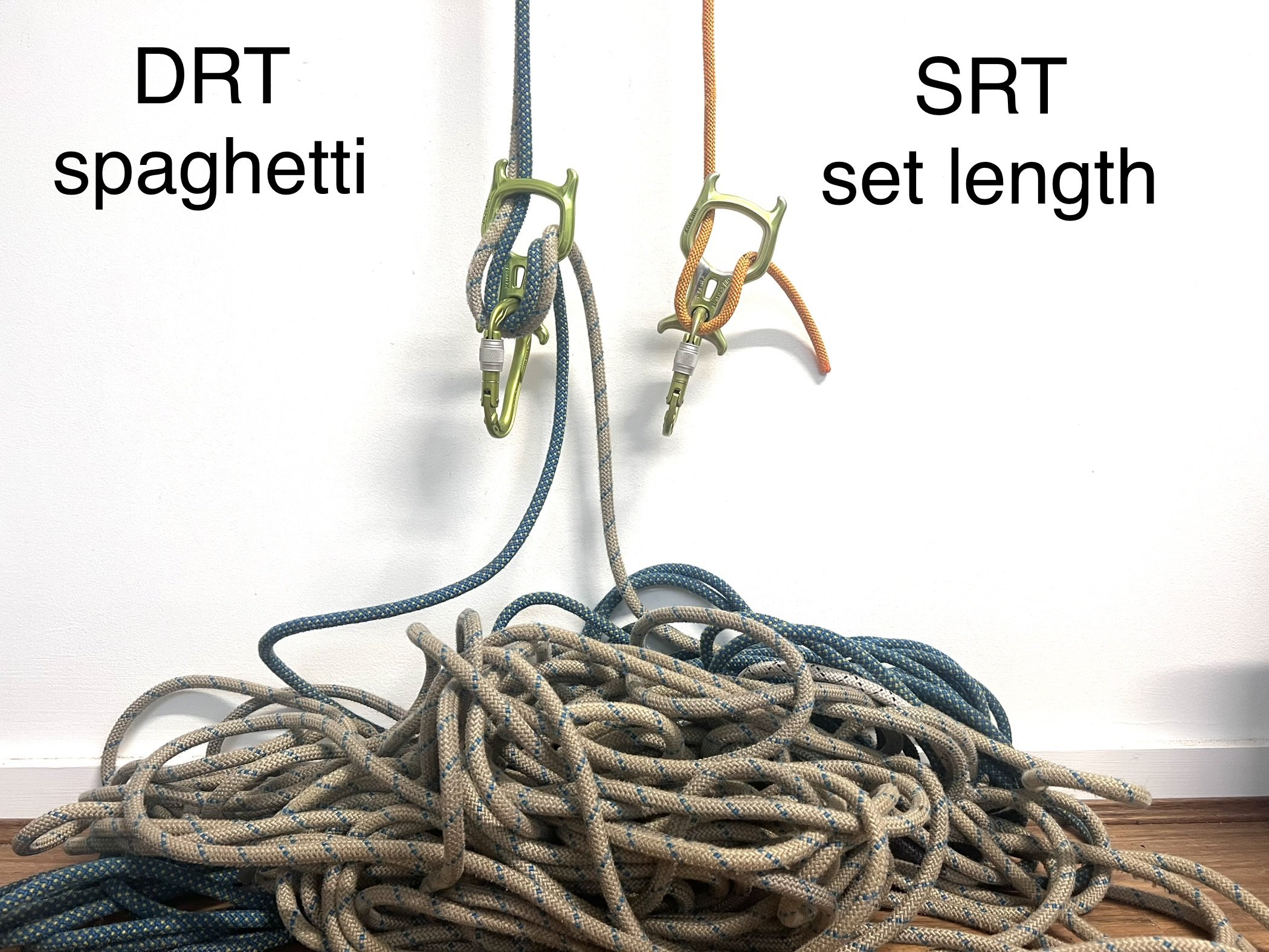What is canyoning? A brief look at the Blue Mountains.
Canyoning is a mountain sport where an individual or group travels down a canyon.
A canyon is defined as having a greater vertical axis than horizontal one. Picture a river, it is flat and wide. A canyon is narrow and high.
It’s wet, runs downstream but it isn’t a river
Canyons are formed by erosion. Water and time are the chief engineers of these spectacular formations. Slot canyons require a combination of fast water and sedimentary rock. The Blue Mountains area has over 900 (known) slot canyons formed by water erosion of the sandstone. Often sinuous with complex chambers of varied textures, painted with mosses or the red of the ironstone, punctuated by deep pools, mysterious grottoes and waterfalls Blue Mountains canyons are visually stunning.
(Despite the name the Blue Mountains is not series of mountain ranges but instead an uplifted plateau. We live on the top of it and descent down it for many of our mountain activities, the opposite of say the Alps.)
Canyoning in the Blue Mountains
Canyoning has been practiced in Australia for a little over fifty years. One of the most established areas is the Blue Mountains National Park.
The canyons of the BMNP are largely fed by small creeks, hanging swamps and sandstone aquifers. The canyons themselves are typically shallow slot canyons, fed from the headwaters of the plateau. They not typically fed by large rivers, with extended mountainous catchments, and there is no consistent annual “wet season” or “spring melt” season. We fluctuate between seemingly random droughts and floods.
Though “wet” the velocity and volume of water that travels through these canyons is lower than the typical “aquatic” canyons of New Zealand or Europe.
Blue Mountains canyons generally do not contain constant whitewater hazards such as keepers, siphons, hydraulics, turbulent and aerated water. Those hazards impact buoyancy and present drowning hazards. The lack of whitewater hazards has had implications on commonly taught roping techniques for canyoning in the Blue Mountains.
It’s called “throw and go”.
If a canyon has a high abseil of 10m abseil you need a minimum 20m length of rope to descend. 10m for abseiling, 10m to pull it down after you.
Rope in the anchor, ready to “throw and go”
In a multiple abseil canyon you will have a maximum height abseil. Every abseil less than height than the maximum abseil uses less rope, therefore we have spare rope.
For example:
A 1m abseil requires 1m abseil rope + 1m pull down rope = 2m total rope.
If we have 20m total rope - 2m abseil/pulldown rope = 18m of unused rope.
We feed through our 20ms worth of rope through the anchor point, find the middle/join and throw it down
18m of unused rope is sitting on the ground. This is a rope spaghetti. It can be an issue.
How can we overcome this issue? With Single Rope Technique.
You can use both, but one is preferred in turbulent water.



